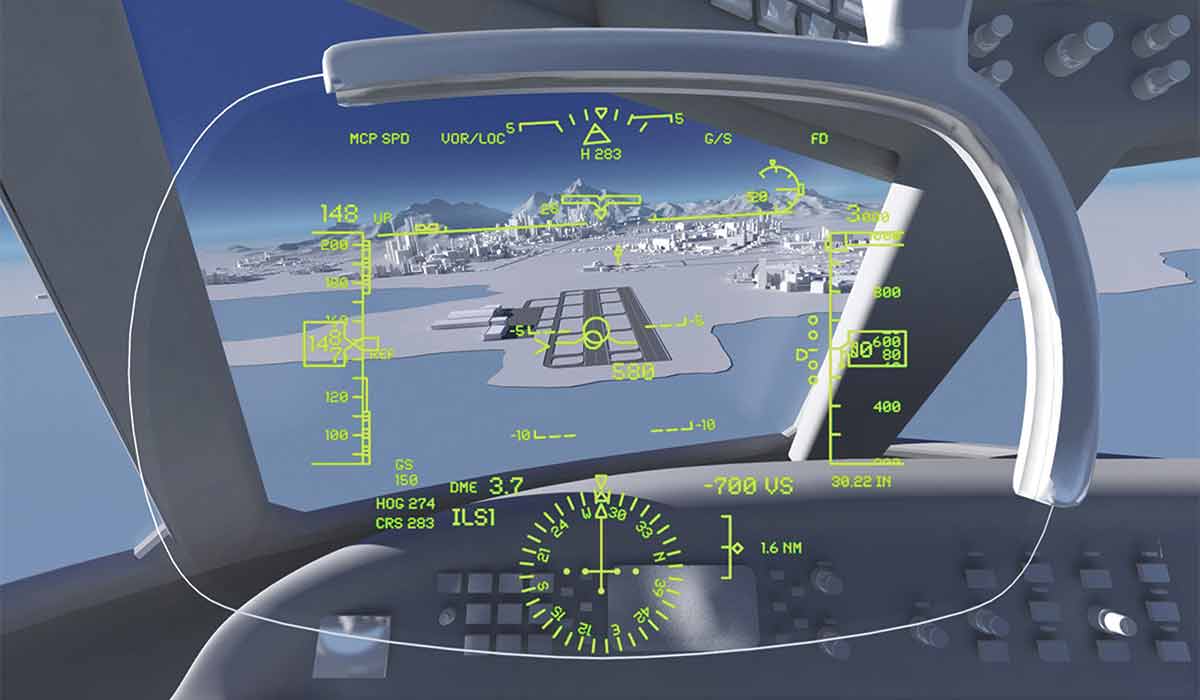
A head-up display gives pilots access to the critical flight information needed to safely fly the aircraft while allowing them to focus their attention outside the cockpit for potential conflicts or threats. Illustration by Bryan Christie Design
A head-up display gives pilots access to the critical flight information needed to safely fly the aircraft while allowing them to focus their attention outside the cockpit for potential conflicts or threats.
A HUD projector sends critical flight, navigation and aircraft energy-management data to a glass screen, called a combiner, hanging at eye level between the pilot and the windshield. As the pilot peers through the combiner glass, he or she can view the outside world and also see airspeed, altitude, heading, course, and flight-path guidance symbology on the screen.
The concave-shaped combiner glass is coated with a proprietary material that reflects the color green but allows everything else, such as the scenery outside, to pass through, appearing quite naturally. The coating reflects green to illuminate the HUD’s symbology, because the human eye is most sensitive to that color.
The HUD projector attached to the ceiling above the pilot contains a backlighted liquid-crystal display as the light source to aim the flight data at the combiner screen. The LCD aims the information forward, focusing it through a series of multiple relay lenses aligned nonsymmetrically. As the light hits the combiner glass, the rays of light are forced to align themselves in parallel rows to an infinite point in space, a little trick that prevents the pilot from needing to refocus his eyes as he peers through the screen. That alignment of the light is referred to as collimation.
Like aircraft, not all HUDs are created equal. One difference relates to field of view, essentially how wide left or right the flying pilot can see the outside world through the combiner glass. Because aircraft don’t always fly where the nose is pointed, a wider field of view allows the HUD to accurately project data at the edges of the display in strong crosswinds. The lateral field of view can vary from 15 degrees to as much as 21 degrees either side of the nose. Vertically, it ranges from 24 to 30 degrees.
Older HUDs use cathode ray tubes to project the operational data but are quickly being traded for LCD light sources. CRT projectors are much heavier and don’t produce images nearly as sharp as those from an LCD.

Sign-up for newsletters & special offers!
Get the latest FLYING stories & special offers delivered directly to your inbox






